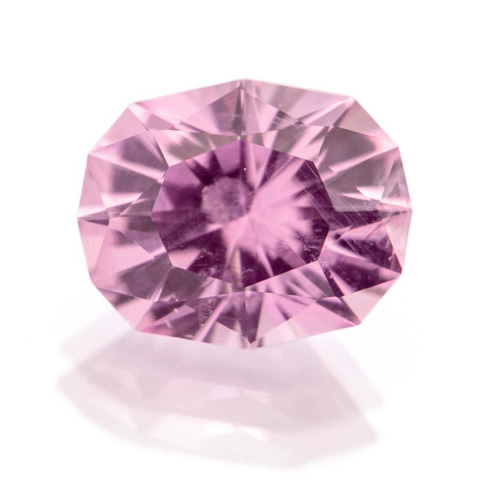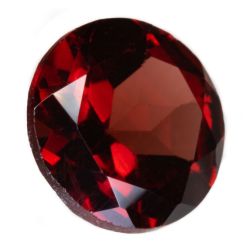American Gem Stories: Montana Sapphires

Nothing evokes the spirit of the American West for me more than cowboy boots and Montana sapphires. As pioneers and gold prospectors journeyed west in the mid-1800s in search of wealth and adventure, they found not only gold sparkling in the spring runoffs, but rounded pebbles of pale blue, pink, yellow and green sapphires.
In the summer of 2017, I traveled with the Montana Painters Alliance to the Judith River Basin for their annual “Paint Out.” The Judith Basin, along the river’s south fork, is a remote, mostly quiet area of northern Montana, outside of Utica about an hour, and a couple of hours north of the Little Belt Mountains and White Sulphur Springs. The Judith River runs through canyons rimmed by rocky peaks, lush valleys, verdant forests, farmland, and ranches before emptying into the Missouri River. It’s a long and bumpy but scenic drive up rutted dirt roads to this remote area.
We camped on private land, on the original homestead, adjoining the sod-roof log cabin built in 1880 by prospector, hunter, and adventurer Jake Hoover. It was in this area that Hoover came upon the very young and not-yet-famous cowboy artist Charlie Russell. Russell had been wandering about Montana on a run-down horse with little to eat. Hoover took Charlie in and taught him all about ranch and wilderness living.
 This is me modeling in the heat for the painters one afternoon
This is me modeling in the heat for the painters one afternoon
in front of Jake Hoover’s cabin.
 Painting by Todd Connor
Painting by Todd Connor
Hoover, primarily a hunter, selling his harvests of elk, deer, and bear meat to area ranchers, owned a sapphire mine down the road at Yogo Gulch. This not yet famous mine produced many fine gems including a cigar box full of sapphire pebbles Hoover managed to sell to Dr. George F. Kunz at Tiffany and Company in New York for $3,750.00. Shortly thereafter, Hoover sold his mine shares for $5,000 only to have them sell a few months later to an English firm for $100,000.
 Jake Hoover’s cabin
Jake Hoover’s cabin
Great timing was not Hoover’s strong suit, but lending a hand to the young Charlie Russell certainly was well-timed for the aspiring artist. After two years under Hoover’s mentorship, Russell was able to get work as a night wrangler at a local ranch. The job kept his belly full and his days free to explore and make sketches of his experiences. Many of Russell’s most well-known paintings are set in the Judith Basin, depicting his time in the wilderness and on the ranch, telling the stories of settlers, trappers, and the native “Indians.”
The 2017 Paint Out was a unique opportunity for members of the Montana Painter’s Alliance to spend a weekend creating plein-air paintings on the Hoover homestead and for me to explore.
 Artist Todd Connor at work, toddconnorstudio.com
Artist Todd Connor at work, toddconnorstudio.com
While the artists were busy painting, I went out riding on my mountain bike up gravel roads through the beautiful countryside where Charlie Russell and Jake Hoover once worked as cowboys. Some miles up the road from the historic cabin, I came upon Sapphire Village, a dusty settlement of trailers with a bar and laundry a few miles from the sapphire mines of Yogo Gulch.
 Just outside Sapphire Village
Just outside Sapphire Village
I rode my bike up to the mine entrance but there would be no sapphire mining for me. The tall chain link fence and heavy steel gate was well guarded by angry dogs and “no trespassing” signs. I kept my head down and my legs pedaling, quickly, up the rough road to the Elk Preserve and then looping back to art camp. Although I didn’t see any elk or sapphires that day, the color palette was apparent all around me. The strong, quiet, steely blues, greens and yellows common to sapphires from this locality remind me of Montana’s dusty roads, hazy sun, running streams, cloud-streaked skies, and the edgy feeling of adventure that comes from not being quite where you should be. That’s a Montana sapphire. Unexpected.

 Montana Sapphires from Mayer and Watt
Montana Sapphires from Mayer and Watt
Where did these alluvial deposits of sapphires come from? Geologists still haven’t figured it out, though they do have some ideas. Montana’s sapphires are found in alluvial deposits in places like Yogo Gulch, which means they’ve been moved by water from their original source. It is also possible that they were transformed by water (or, at least, water vapor) as well. A GIA analysis of the inclusions in Montana sapphires points toward a “metasomatic” origin. Geology.com describes metasomatism as “the alteration of rocks by hot, chemically-active fluids that flow or diffuse through the rocks and cause recrystallization and compositional change.” This process is common in other areas where corundum, the mineral form of sapphire and ruby, is found.
Montana, like the region of northern Arizona that produced the ant hill garnet, was once an extremely geologically active region. The work of shifting tectonic plates, glaciers, and a vast prehistoric ocean have created some of the most beautiful landscapes in the world. These processes may also be responsible for the rich mineral deposits found beneath them.
 Montana Sapphire from Mayer and Watt
Montana Sapphire from Mayer and Watt
Yogo sapphires hold a special place among Montana sapphires. They have their own name due to their rarity and the intensity of their color, which is naturally vibrant and does not require heat enhancement. We might not know exactly how these sapphires came about, but we are well-acquainted with the result: some of the world’s most beautiful sapphires.
I like to use them in designs both rugged and elegant. I like to set them in my belt buckles as well as simple wedding bands. They appear in my sterling silver American Metaphor pendants and in rings, earrings and bracelets where they are part of a palette of garnets, tourmalines, and spinels, as in these Cascade Earrings.
 Indigo and Violet Cascade Earrings
Indigo and Violet Cascade Earrings










I came across a 144 fantastic platform that I think you should take a look at.
This platform is packed with a lot of useful information that you might find valuable.
It has everything you could possibly need, so be sure to give it a visit!
https://www.the-star.co.ke/news/2022-05-02-how-to-effectively-increase-sales-for-a-business/
Furthermore don't forget, guys, that you constantly may inside this particular article discover answers for the most the very tangled questions. We attempted to present all information in an extremely easy-to-grasp way.